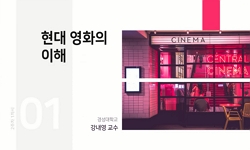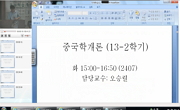This thesis analyses the representation of Joseon tourism in the articles of an entertainment magazine, <The Modern Japan, Joseon Edition>(1939, 1940) published in Japan during the Japanese Colonial Period, focusing on its editing planning and t...
http://chineseinput.net/에서 pinyin(병음)방식으로 중국어를 변환할 수 있습니다.
변환된 중국어를 복사하여 사용하시면 됩니다.
- 中文 을 입력하시려면 zhongwen을 입력하시고 space를누르시면됩니다.
- 北京 을 입력하시려면 beijing을 입력하시고 space를 누르시면 됩니다.

일제강점기 근대적 미디어에 의한 조선관광(朝鮮觀光) 표상의 특징 - 잡지 『모던일본』 조선판(1939, 1940)을 중심으로 - = The characteristics of representation to Joseon tourism by modern media in Colonial Joseon - Focused on the 『modern Japan』(1939, 1940) -
한글로보기https://www.riss.kr/link?id=A101903559
- 저자
- 발행기관
- 학술지명
- 권호사항
-
발행연도
2016
-
작성언어
-
-
주제어
모던일본 ; 이중 근대 ; 콜로니얼 투어리즘 ; 오리엔탈리즘 ; 조선관광 ; The Modern Japan ; double modernity ; colonial tourism ; orientalism ; Joseon tourism
-
KDC
600
-
등재정보
KCI등재
-
자료형태
학술저널
-
수록면
102-128(27쪽)
- 제공처
-
0
상세조회 -
0
다운로드
부가정보
다국어 초록 (Multilingual Abstract)
This thesis analyses the representation of Joseon tourism in the articles of an entertainment magazine, <The Modern Japan, Joseon Edition>(1939, 1940) published in Japan during the Japanese Colonial Period, focusing on its editing planning and the representation of women, and tries to find its characteristics. <The Modern Japan> can give us an opportunity for looking into the phases of that time stereoscopically as a magazine having attracted a great popularity in the 1930s. The magazine published the special editions for Joseon twice, in 1939 and 1940. These were the only special editions which the magazine in Japan(Interior) had tried dealing with Joseon(Outlier), which ‘double modernity’ as the characteristics of Japanese modernity could be confirmed. Japanese modernity was set in the era of Showa and the magazine tried to incorporate the atmosphere of the era that is called as Showa Modern, in its contents. In this respect, it seems to be certain that the magazine had represented Japanese double modernity compressively. The era of Showa, different from the era of Taisho, was the period that relativized the western culture, emphasized Japanese things, and also tried to find out other possibilities with Japanese things rather than depended on one way imports of the western things. But this emphasis on Japanese things had gradually changed into fascism and then linked to the process of excessive self-deconstruction. <The Modern Japan, Joseon Edition> published in the middle of time between these two wars, vividly reflected the atmosphere of the time that the efforts of searching for new possibilities with Japanese things just had came to the conclusion. It was appeared clearly as obsession of the Naeseon Ilche, Korea and Japan are One, and the awe at Joseon women. This colonial gaze had shown the layered and ambivalent characteristics such as obsession, anxiety, agitation, envy and so on, which had been permeated not only in the editorial planning but also in its articles. This study started on the base of some advanced researches on <The Modern Japan, Joseon Edition>, and kept considering the attributes of ‘double modernity’ of Showa modernism. It examined the editorial styles and the features of the remarks that the magazine represented Joseon women, while considering the context of the colonial tourism, in other words the context of travels and tourism in Joseon, that had been actively spreaded out among the Japanese people. Through this examination focusing on <The Modern Japan, Joseon Edition> published in 1939, 1940) the study came to the conclusion that the Japanese modernization projects, that is to say ‘double modernity’, had failed on its way from the foundation of <The Modern Japan> in 1930 to the publication of <The Modern Japan, Joseon Edition> in 1939 and 1940.
동일학술지(권/호) 다른 논문
-
선비風流가 빚어낸 문인화의 理想鄕 - 風竹의 文人畵境界-
- 한국동양예술학회
- 권윤희
- 2016
- KCI등재
-
선비풍류(風流)가 빚어낸 문인화의 이상향(理想鄕) - 풍죽(風竹)의 문인화(文人畵) 경계(境界) -
- 한국동양예술학회
- 권윤희 ( Yun Hee Kwon )
- 2016
- KCI등재
-
사극드라마 장옥정, 사랑에 살다에 표현된 헤어스타일 및 장신구 연구
- 한국동양예술학회
- 김민경 ( Min Kyoung Kim )
- 2016
- KCI등재
-
- 한국동양예술학회
- 김지원 ( Ji Won Kim )
- 2016
- KCI등재





 eArticle
eArticle






